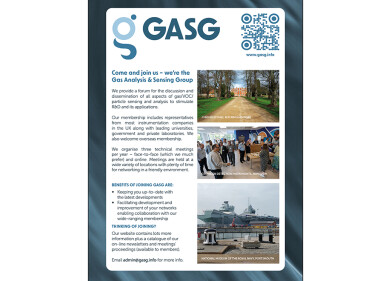Gas detection
Hydrogen Monitoring Improves Syngas Efficiency
Apr 25 2012
Syngas (synthesis gas) is manufactured from feedstocks containing carbon, such as coal, heavy oil, natural gas or biomass, to produce a mixture of hydrogen and carbon monoxide. The production process involves a number of phases that start with gasification of the feedstock, and efficiency is greatly improved when hydrogen levels are monitored using a new sensor technology that is able to measure continuously without interference from other gases.
Syngas is used in the production of synthetic petroleum, lubricants, fuels for internal combustion engines and as an intermediate in the production of other chemicals.
The gasification phase requires very high temperatures, depending on feedstock and process, which are obtained from an external heat source or by partial oxidation of part of the feedstock to release heat. A purification process then removes impurities such as carbon dioxide, water vapour, methane, sulphur compounds, tar and ash. After which, the proportion of hydrogen and carbon monoxide is adjusted depending on the intended use of the syngas.
Continuous hydrogen measurement provides an opportunity for real-time control of the production process by enabling the operator to make adjustments to ensure maximum efficiency. For example, water may be added to increase levels of hydrogen, or water might be removed to increase the carbon monoxide level. As a result, the operator is able to produce a final product with the correct ratio and to then check that this has been achieved. In the absence of hydrogen measurement, the end product ratio can only be an estimation.
Quantitech (UK) has supplied innovative H2scan hydrogen-specific analysers to the UK market for the last four years. These analysers employ a solid-state hydrogen specific technology based on palladium/nickel alloy that requires no sample gas, reference cell or routine calibration. The sensing material is inherently specific to hydrogen and has the capability to operate in a variety of multi-component and varying-component gas compositions, including tolerance to % levels of hydrogen sulphide and carbon monoxide. Custom conditioning and calibration in contaminant gas streams along with a very precise on-board temperature control loop provides high accuracy and long-term stability. The analysers are also adaptable to conventional or NeSSI type sample systems.
Digital Edition
AET 28.4 Oct/Nov 2024
November 2024
Gas Detection - Go from lagging to leading: why investment in gas detection makes sense Air Monitoring - Swirl and vortex meters will aid green hydrogen production - Beyond the Stack: Emi...
View all digital editions
Events
Jan 12 2025 Abu Dhabi, UAE
Jan 14 2025 Abu Dhabi, UAE
Jan 20 2025 San Diego, CA, USA
Carrefour des Gestions Locales de L'eau
Jan 22 2025 Rennes, France
Safety, Health & Wellbeing LIVE
Jan 22 2025 Manchester, UK



















